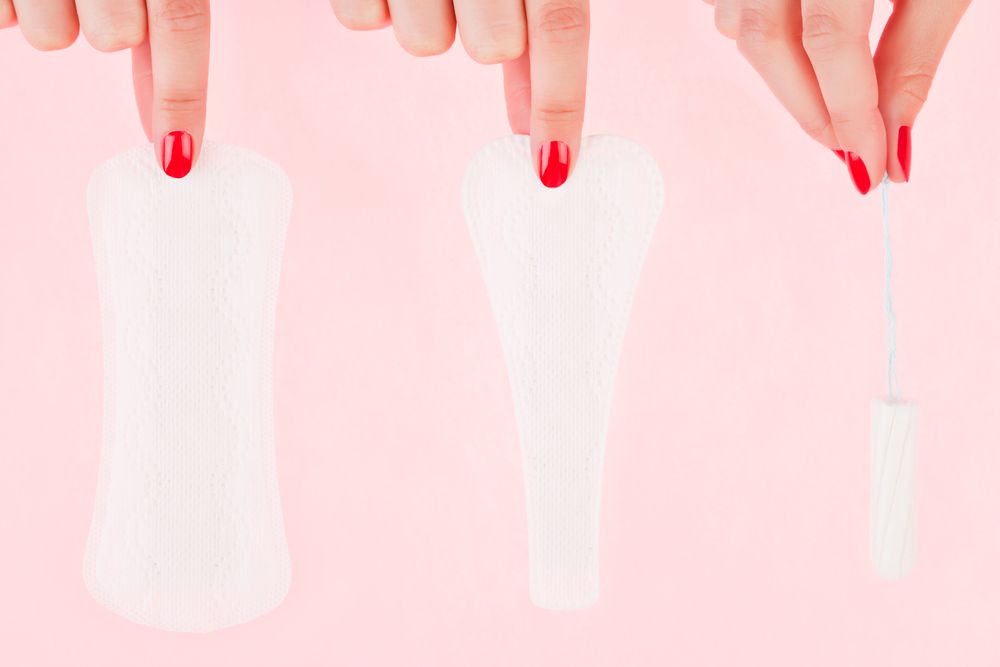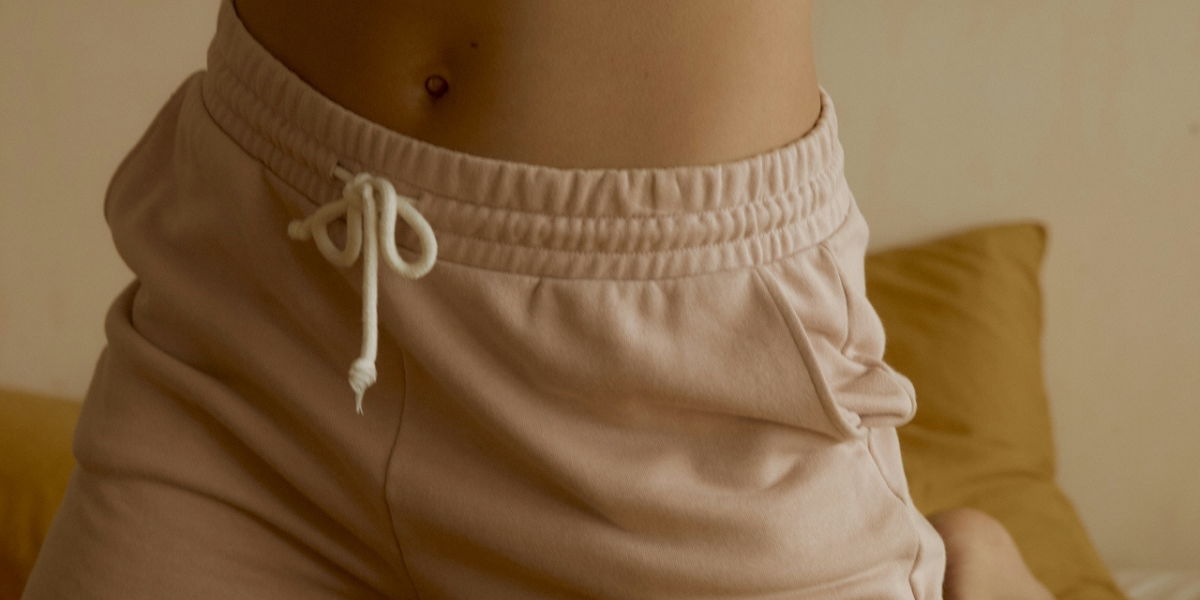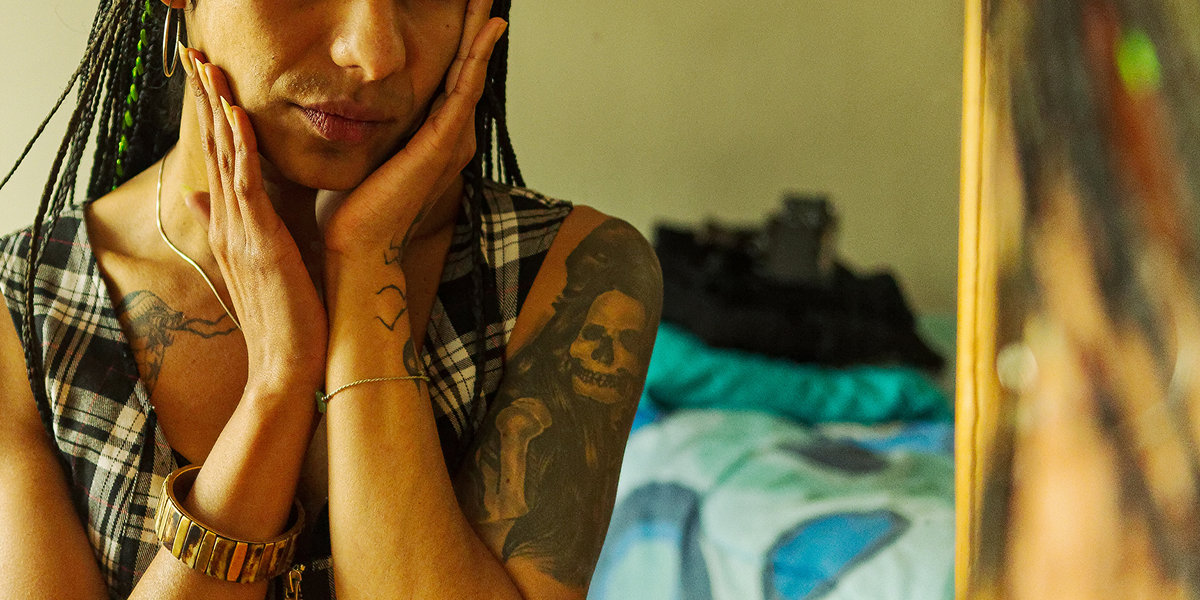In a society that (largely) doesn’t talk about menstruation (and when it does talk about menstruation, it is often rife with body shaming/misogyny/the bullshit notion that bleeding makes you dirty, etc), it can feel radical when there are not only conversations about how to deal with bleeding and all of its complications, but when we are also provided with alternatives to the often toxic products made available to us. Tampons and disposable pads can be full of illness-causing chemicals, as well as impossible to dispose of responsibly, and can take a toll on your finances. Behold! A list of alternative menstrual products that promote health, chemical-free lifestyles, sustainability, local economies, and the wellbeing of your pocketbook — and we’re moving beyond Diva Cups (sorry, Diva Cup fans!).
Menstrual Sponges
Menstrual sponges are the absolute shit. I was converted to using them almost a year ago, when my pal Ash Fisher (who is a badass comedian, as well as femme extraordinare introduced me to Holy Sponge, an Oakland-based, queer-owned company that sells sustainably harvested sponges in a variety of sizes. I reached out to founder Janeen Singer to ask her to talk to me about her process, mission, and why she loves sponges so much.
“Sea sponges are the only menstrual product for insertion that is 100% natural. They come from the ocean and return the earth (they can be composted!). My main motivation in beginning to use them myself was how incredibly friendly they are to our planet. Obscene amounts of tampons, pads and packaging end up in the ocean and ironically, there is this beautiful resource in the very ocean we are trashing — a resource that does not have toxic cancer-causing ingredients like dioxins, furans, pesticides, and who-knows-what-else.”
Janeen and the fine folks at Holy Sponge are also committed to consumer-accountability and sustainable business practices. “If you are in a position where you are unable to pay full price for a kit, contact us and we can discuss possible solutions or a trade. If you are buying tampons, the kit and eventual refill sets will end up saving you money in the long run. One thing that is important to note is that our sponges come from a company in Florida that harvests the sponges in a sustainable way, under Florida laws. You may pay a bit more for our sponges (vs. craft supply sponges shipped from overseas with no labels or accountability) but your heart, mind, and body can be at ease knowing there are ethics to all parts of our process.”
The sponges feel pretty great, especially for those of us who experience wicked cramps — filling the sponges with warm water before insertion acts as an anti-spasmodic, almost like having a mini heating pad inside you. The only downside to these magical sea creatures? “The very thing that makes sponges so comfortable (the way they mold to the inside of a person’s body) also presents a side that can make them challenging — like sneezing and feeling your sponge contract with your body! We recommend using a thin re-useable pad alongside the sponge to catch any leaks that accompany belly laughs or sneezes,” Janeen writes.
The kits run around $20 for a new kit, and $14 for refills. They include two sponges, a muslin carrying bag, a sprig of sage (because Holy Sponge promotes the idea of menstruation as ritual), and a vial of tea tree oil for cleaning.
Cloth Pads
For those of you who can’t get behind insertion, there are some great alternatives to disposable pads! Gladrags and Amazpads all have a variety of colors, size, and fabrics to choose from, which helps make your red less monochromatic. However, my two favorite methods of procuring quality, fashionable cloth pads are to purchase them off Etsy, which allows you to support menstruation artists everywhere, and to make my own. You know you’ve got a bunch of old flannels lying around — utilize the cuffs to make super-gay plaid pads that have fancy snaps to fit around your underwear! Did your ex leave her favorite shirt at your house? Bleed all over that shit! Have leftover clothes from your last clothing swap? BOOM, FREE PADS! The possibilities are endless.
Cloth pads last about two years, especially if you aren’t picky about residual stains, and are easy to clean. Most companies recommend soaking them immediately after use, and then throwing them in the washer with a little vinegar or baking soda. They can then be line-dried or put in the dryer with your other clothing. Be mindful, of course, if you are using cotton that could shrink, and plan your pattern to allow for a change in size. Cloth pads can range from $10-100, depending on the materials used, sizing needed, and company you purchase them from.
The only downside to cloth pads? They can be bulkier-feeling than their disposable cousins, and you need to carry them around with you while you’re out in public or traveling (which can definitely lead to some hilarious situations, as I’ve experienced!).
As Janeen of Holy Sponge says, there is something radical and transformative about connecting with your body and the way it bleeds every month: “It stands in stark contrast to decades of menstrual product marketing which promises to make a the monthly flow “invisible,” pure white, like no one would never even know they were bleeding in the first place. Many people have a strong reaction to the idea of having to come in such direct contact with their vaginas and blood, and I think this is just a symptom of a larger social disease of disconnection from life’s processes. Life is not permanent and here inside of a the body is the possibility every month for new life. When new life is not created, the body sheds and re-creates itself anew. The life-death-life cycle is within us, but we live in a culture in denial of the death aspect, therefore we deny a natural letting-go.”







